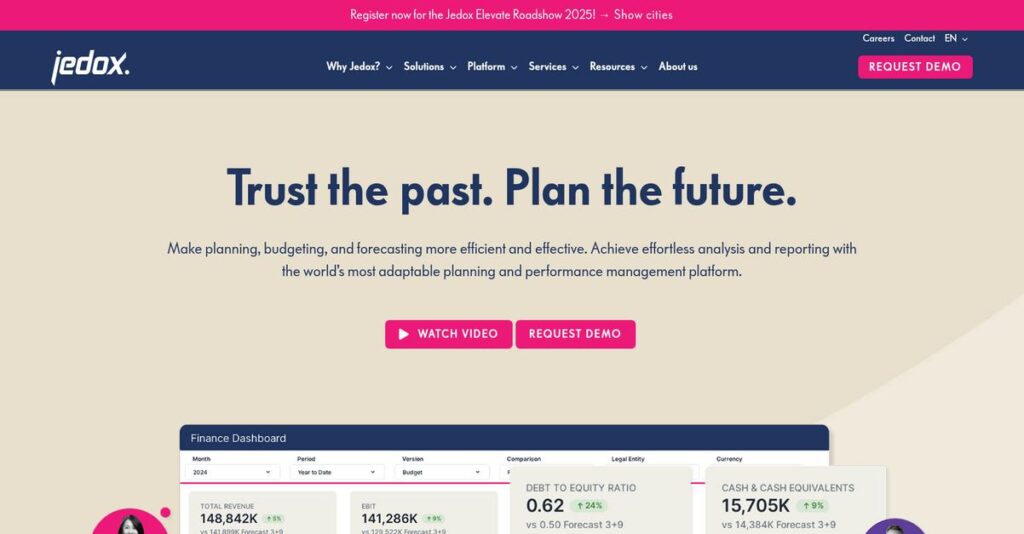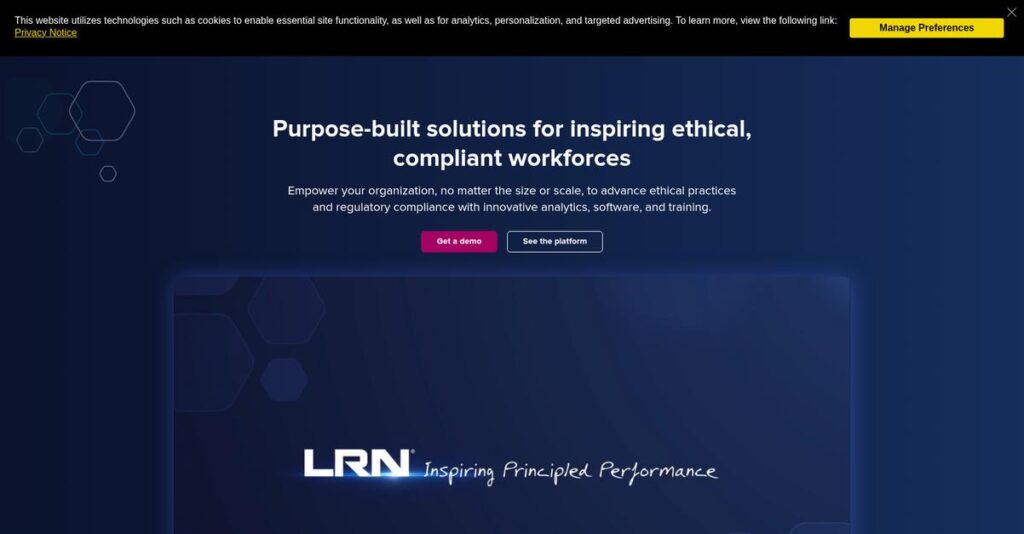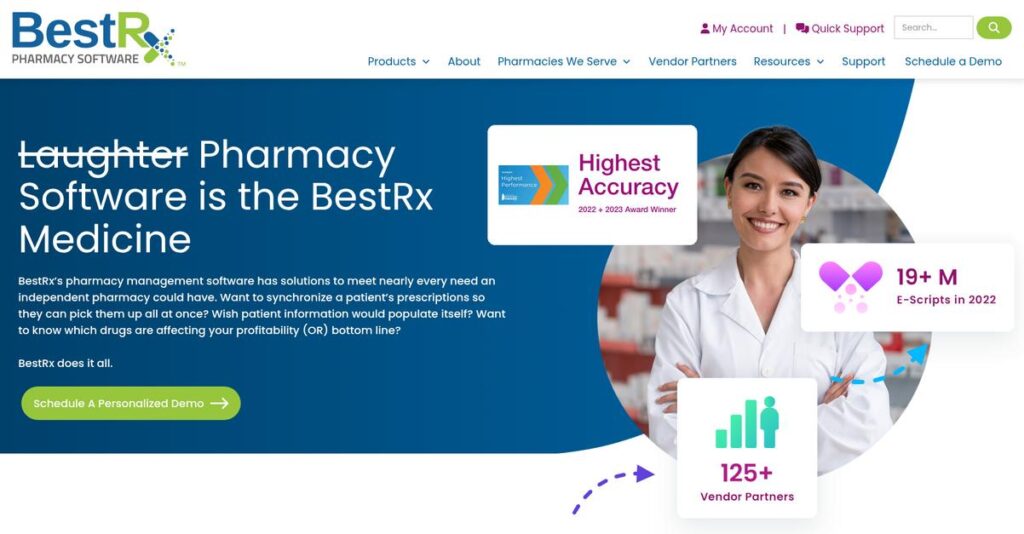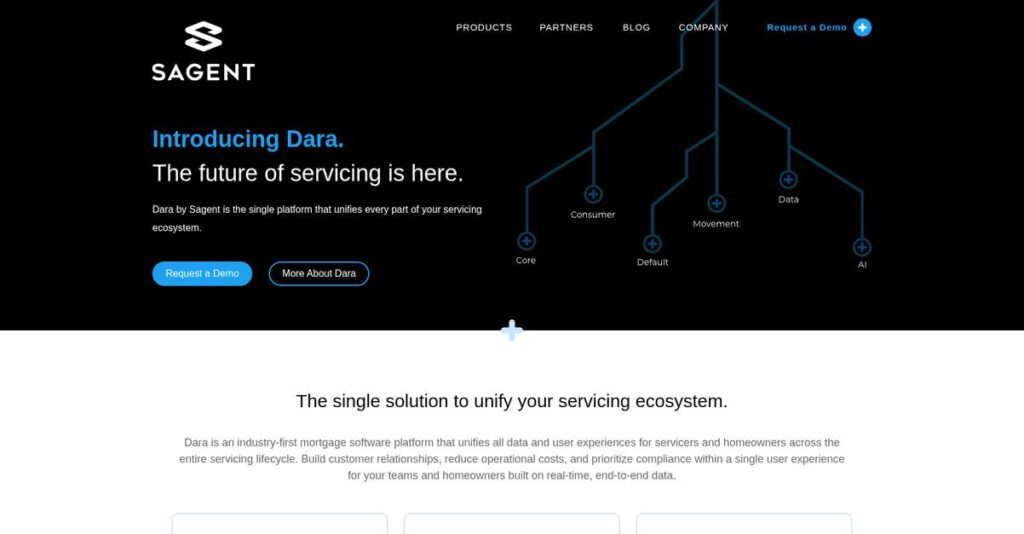Disconnected plans always equal broken forecasts.
If you’re dealing with finance, sales, and HR all working off separate spreadsheets, you’re probably stuck reconciling numbers every month and never fully trusting your forecasts.
After researching the leading planning platforms, my analysis reveals: manual spreadsheet chaos leads to expensive misalignment across departments that directly impacts your team’s ability to plan with confidence.
Jedox tackles this head-on with unified planning, live Excel integration, real-time analytics, and built-in AI-supported forecasting—all on one adaptable platform. I actually found their ExcelPlus add-in and in-memory OLAP are real differentiators for complex, cross-functional planning.
In this review, I’ll walk you through how integrated planning creates clarity and real accountability for your business’s decision-makers.
You’ll see exactly how Jedox works, get insights on practical implementation, latest features, pricing, and my take versus other EPM solutions in this Jedox review.
By the end, you’ll know the features you need to move beyond disconnected spreadsheets and build confidence in your numbers.
Let’s dig into the details.
Quick Summary
- Jedox is a flexible Enterprise Performance Management platform that unifies planning across finance, sales, HR, and operations.
- Best for mid-market to large companies needing integrated, driver-based financial and operational planning.
- You’ll appreciate its fast in-memory OLAP engine and ExcelPlus Add-in that ease adoption and support complex scenario analysis.
- Jedox offers subscription pricing with a 14-day free trial and requires direct contact for customized quotes.
Jedox Overview
Jedox has operated since 2002 from its base in Germany. What I find compelling is its mission to help you unify strategic and operational planning across every department.
My analysis shows they specialize in serving mid-market and large enterprises dealing with complex planning requirements. Their key difference is a focus on integrated business planning (xP&A), connecting finance with your sales, HR, and operations teams.
Recent developments like their AIssisted™ Planning launch are vital for this Jedox review. I found it shows a real commitment to embedding practical AI into your core planning workflows.
Unlike competitors that force you into an unfamiliar system, Jedox is more pragmatic. They combine a powerful Excel add-in with a high-performance back-end database, giving your team both familiar usability and incredible speed for complex scenarios.
They work with well-known global brands and agile mid-market companies, especially in manufacturing and retail. These are typically organizations that have finally hit the performance walls of spreadsheets.
From my research, Jedox’s current strategy is centered on delivering true Extended Planning and Analysis (xP&A). This approach directly addresses the market’s need for a single source of truth that incorporates reliable, forward-looking predictive insights.
While discussing the importance of reliable, forward-looking predictive insights, understanding statistical analysis software is equally important for mastering complex data.
Now let’s examine their capabilities.
Jedox Features
Disconnected plans cripple business insights.
Jedox provides an integrated suite designed to unify your entire business planning process. These Jedox solutions can replace your disconnected spreadsheets with a powerful, collaborative environment. Here are the five core Jedox solutions that really transform how you plan.
1. Integrated Planning (xP&A)
Are your planning efforts disconnected?
Separate plans for finance, sales, and HR cause major discrepancies. This leads to manual reconciliation and flawed forecasts, slowing down crucial business decisions.
Jedox provides a unified platform where departments link models. Changes in one area instantly update others. What I love: Jedox truly enables comprehensive xP&A. This solution gives a single source of truth.
You gain real-time scenario modeling, instantly reflecting changes across all departments. This dramatically improves your business strategy’s agility and accuracy.
2. Jedox ExcelPlus Add-in
Reluctant to leave Excel?
Forcing finance into new software creates a steep learning curve. This reduces adoption, slowing your transition to centralized planning.
The ExcelPlus Add-in embeds Jedox into Excel. You access the In-Memory DB using familiar Excel. What impressed me: real-time data access within Excel. You never leave Excel.
This drastically reduces training, boosting user adoption. You leverage Excel skills, gaining Jedox’s security and performance.
3. Reporting and Analytics
Tired of static, outdated reports?
Manual report creation is time-consuming and often outdated before distribution. This wastes analyst time and leaves decision-makers working with old data.
Jedox provides self-service reporting and dashboards connected to live planning data. This solution simplifies data access. Here’s what impressed me:
- Drag & drop report building
- Automatic scheduled distribution
- On-demand web/mobile access
- Direct drill-down capabilities
This frees up analysts from manual tasks. Decision-makers get up-to-the-minute data and analyze trends independently.
4. Jedox In-Memory DB (OLAP Engine)
Slow calculations on large datasets?
Traditional databases crawl on complex, multi-dimensional data. This makes “what-if” scenario analysis frustratingly slow and impractical.
Jedox uses a high-performance, in-memory OLAP database. It’s optimized for on-the-fly calculations. Change a driver, and it instantly recalculates dependent values. This is where Jedox delivers incredible speed.
You get extremely fast performance for complex analysis and reporting. This speed makes real-time “what-if” planning practical.
While we’re discussing comprehensive data insights, understanding how to reclaim essential information is equally important for data integrity.
5. Jedox AIssisted™ Planning
Forecasting biases and inaccuracies?
Traditional forecasting relies on human assumptions, leading to biased, slow predictions that struggle adapting to new market signals.
This feature integrates AI/ML into planning. It analyzes data for predictive forecasts, identifies anomalies, and suggests optimized plans. Jedox AIssisted™ Planning enhances predictions.
You get augmented planning with data-driven insights. This leads to more accurate forecasts, reduced bias, and faster opportunity identification.
Pros & Cons
- ✅ Highly flexible for complex business modeling and logic.
- ✅ Excellent Excel integration boosts user adoption significantly.
- ✅ In-memory OLAP database delivers lightning-fast performance.
- ⚠️ Requires significant training for model builders and administrators.
- ⚠️ Implementation can be complex, often needing specialized consultants.
The power of these Jedox solutions lies in their cohesive, integrated design. They truly create a unified planning environment, breaking down data silos. This provides a single version of truth, enabling smarter, faster business decisions.
Jedox Pricing
Navigating enterprise software costs a headache?
Jedox pricing operates on a custom quote model, reflecting its enterprise-grade nature. This means you’ll need direct contact with sales to understand costs, ensuring a solution tailored precisely to your organization’s specific needs.
Cost Breakdown
- Base Platform: Estimated $25,000 to $50,000 per year range (entry-level for mid-market)
- User Licenses: Differentiated by Planner (Power) vs. Viewer roles
- Implementation: Typically separate; often through partners or Jedox Professional Services
- Integrations: Varies by complexity; often part of implementation costs
- Key Factors: User type, modules, data volume, cloud instance size
1. Pricing Model & Cost Factors
Their pricing model makes sense.
Jedox’s pricing is subscription-based, with costs primarily driven by user count and type – Planners vs. Viewers. What I found regarding pricing is it adjusts based on your required modules and data volume. This custom approach ensures you only pay for what your complex planning environment truly needs.
From my cost analysis, this means your investment aligns directly with your operational scale, preventing overpayment for unused capabilities.
2. Value Assessment & ROI
Value proposition is clear.
Considering the integrated planning and advanced analytics Jedox offers, their pricing reflects enterprise-level value. What makes their pricing different is its focus on breaking down data silos, leading to significant efficiency gains across finance, sales, and HR. You’re investing in unified insights.
This helps you achieve a strong ROI by replacing disparate systems with a single source of truth, improving forecast accuracy.
3. Budget Planning & Implementation
Plan for total ownership.
Beyond the core subscription, your budget needs to account for implementation, training, and premium support, typically handled by professional services or partners. What stands out in their pricing is the emphasis on tailored deployment, often leading to substantial upfront costs. This ensures a proper setup for your team.
So for your business, expect the first-year total cost to be notably higher due to these essential setup investments.
While discussing operational efficiency, my guide on Robotic Process Automation software offers insights into freeing up your team.
My Take: Jedox pricing prioritizes a tailored fit for mid-market to large enterprises, ensuring you pay for specific functionality and scale. It’s designed for organizations seeking robust, integrated planning without rigid, generic packages.
Overall, Jedox pricing is designed to meet complex enterprise planning needs, offering a customized solution that aligns with your specific operational scale. This ensures your budget gets precise value.
Jedox Reviews
Does Jedox really live up to the hype?
My analysis of numerous Jedox reviews reveals a powerful solution with high user satisfaction, though some key considerations emerge for potential users.
1. Overall User Satisfaction
Users seem generally satisfied.
From my review analysis, Jedox boasts high average ratings, showing 4.5/5 on G2 and 4.6/5 on Capterra. What I found in user feedback is that users often describe it as powerful but complex, emphasizing its strength when properly implemented by skilled teams.
This suggests your success will largely depend on investment in setup and training.
2. Common Praise Points
The platform’s flexibility consistently impresses users.
Users frequently praise Jedox for its exceptional flexibility and power to model intricate business logic. From the reviews I analyzed, the Excel Add-in is a consistent favorite, significantly easing adoption for finance professionals already familiar with spreadsheets.
This means your team can leverage existing Excel skills within a robust planning environment.
3. Frequent Complaints
Steep learning curve is a recurring theme.
Many users highlight a steep learning curve, especially for model builders and administrators, noting it’s not an out-of-the-box solution. What stands out is how implementation complexity often requires specialized consultants, making self-setup challenging for some teams.
These issues suggest you’ll need dedicated resources or external help for successful deployment.
What Customers Say
- Positive: “The best part of Jedox is its flexibility. If you can imagine a business model or a process, you can build it in Jedox. The Excel Add-In is also a massive plus for our finance team.”
- Constructive: “Be prepared for a steep learning curve. While end users who only input data can be trained quickly, developers and administrators need extensive knowledge to build and maintain the models.”
- Bottom Line: “It’s a robust solution for complex planning, but don’t underestimate the setup commitment.”
The overall Jedox reviews show a powerful tool offering significant benefits, but successful implementation requires commitment.
Best Jedox Alternatives
Considering Jedox? Explore your best options.
The best Jedox alternatives include several strong options, each better suited for specific business situations, budgets, and operational needs. I’ll guide you through making the right choice.
While we’re discussing alternative solutions, understanding fixed asset accounting software is equally important.
1. Anaplan
Ideal for very large, complex global enterprises.
Anaplan is the enterprise heavyweight, known for massive scalability and handling extremely intricate, global planning needs for Fortune 500s. From my competitive analysis, Anaplan offers unparalleled scalability for complexity, though it demands a substantial budget for both licensing and extensive implementation. It’s a top-tier alternative.
Choose Anaplan when your organization is a very large enterprise with complex global planning and a substantial budget.
2. Vena Solutions
Best if you live and breathe Excel.
Vena embraces an “Excel-native” philosophy, layering control, workflow, and database integration directly around existing spreadsheets. This alternative focuses on enhancing familiar Excel processes. What I found comparing options is that Vena perfects Excel-centric planning workflows, whereas Jedox’s core OLAP engine offers superior performance for larger datasets.
Consider Vena when your team’s absolute priority is staying within the Excel interface for all planning tasks.
3. Planful
Streamlining core FP&A and accounting?
Planful provides a strong, established solution for simplifying and automating core financial processes like consolidation, reporting, and planning. It’s often more user-friendly out-of-the-box for finance use cases. Alternative-wise, Planful is pre-configured for core finance tasks, making it less of a platform and more of an application.
Choose Planful if your primary need is streamlining core FP&A and accounting close with a user-friendly application.
4. Workday Adaptive Planning
Already immersed in the Workday ecosystem?
Workday Adaptive Planning’s greatest strength lies in its native integration with the Workday HCM and Financials ecosystem. This provides seamless data flow and a unified user experience. From my competitive analysis, Workday seamlessly integrates within their ecosystem, offering a compelling advantage for existing Workday customers looking for an alternative.
Pick Workday Adaptive Planning when your company already uses Workday for HR or Finance for unified data flow.
Quick Decision Guide
- Choose Jedox: Flexible, powerful xP&A for mid-market and large enterprises
- Choose Anaplan: Very large enterprises with extreme global planning complexity
- Choose Vena Solutions: Organizations fully committed to Excel for planning processes
- Choose Planful: Primary need is streamlining core FP&A and accounting close
- Choose Workday Adaptive Planning: Existing Workday HCM/Financials customers
Ultimately, the best Jedox alternatives decision hinges on your specific operational scale, budget, and integration needs. Understanding your unique business requirements is critical for choosing wisely among these powerful platforms.
Setup & Implementation
Thinking about Jedox implementation? Prepare for reality.
This Jedox review section tackles deployment head-on. Implementing Jedox is a significant project, not a simple plug-and-play. I’ll guide you through the practical aspects, so you understand the time, resources, and challenges involved.
While we’re discussing business challenges, understanding how online reputation management software can turn feedback into brand advantage is equally important.
1. Setup Complexity & Timeline
This isn’t a quick software flick.
Building Jedox data models, integration flows, and reports requires specialized skills. My implementation analysis shows success hinges on a well-planned process, often needing external partners. Depending on your business complexity, expect this implementation to be a multi-month endeavor, not weeks.
You’ll need dedicated internal resources or a budget for Jedox’s Professional Services or a certified implementation partner to guide you.
2. Technical Requirements & Integration
Ready for the technical heavy lifting?
As a cloud-based SaaS, Jedox avoids on-premise hardware, but integration is key. Your team’s main technical implementation task is setting up secure data flows from ERP, CRM, and HRIS systems. Automating these data pipelines is critical for accurate planning.
Prepare your IT team to configure robust data connectors and ensure data quality. This requires strong understanding of your source systems.
3. Training & Change Management
Don’t forget your team’s learning curve.
While end-users will find the Excel integration familiar, administrators and model builders face a steep learning curve. From my analysis, this technical mastery is crucial for long-term success. Your Jedox implementation isn’t just about software; it’s about skill development.
Budget for extensive training via Jedox’s online academy and plan for ongoing support to empower your key users and developers.
4. Support & Success Factors
Vendor support makes or breaks rollout.
Jedox receives positive user feedback for its responsive and knowledgeable support team. This quality support is vital during implementation. What I found about deployment is that proactive project management ensures a smoother journey and successful outcomes beyond initial setup.
For your implementation to succeed, designate a strong internal project manager. Clear communication with your Jedox partner is also critical.
Implementation Checklist
- Timeline: 6-12 months for a comprehensive enterprise deployment
- Team Size: Dedicated PM, data modelers, IT for integrations
- Budget: Factor in significant professional services investment
- Technical: Secure data integrations with your core source systems
- Success Factor: Skilled data modelers and strong project leadership
The overall Jedox implementation requires careful planning and dedicated resources. When executed with a skilled team, you’ll find it delivers significant strategic value. Ultimately, successful Jedox implementation transforms your planning process.
Who’s Jedox For
Jedox targets specific business planning challenges.
This Jedox review analyzes who truly benefits from this powerful EPM platform. I’ll guide you through specific business profiles, team requirements, and use cases to help you quickly determine if Jedox aligns with your strategic planning needs.
1. Ideal User Profile
Outgrowing spreadsheets and seeking integration?
Jedox is ideal for mid-market to large enterprises, especially those within the Office of the CFO. From my user analysis, if you’ve outgrown disconnected spreadsheets for critical planning, you’ll appreciate Jedox’s capacity for highly specific, custom financial modeling and unified planning across departments.
Your finance team, comfortable with Excel, will thrive by leveraging Jedox’s powerful in-memory OLAP engine for rapid calculations and insightful scenario planning.
While discussing strategic planning, understanding business continuity management software is equally important for overall resilience.
2. Business Size & Scale
Is your business ready for Jedox?
Jedox serves mid-market to large enterprises with complex, multi-departmental planning needs. What I found about target users is that your organization will benefit most if you have dedicated internal resources or budget for consultants to manage its robust implementation and ongoing development.
You’ll know it’s a good fit if you’re consolidating data from multiple units and need unified planning beyond departmental silos.
3. Use Case Scenarios
Complex planning challenges your primary concern?
Jedox excels when you need to automate and streamline your annual budgeting, rolling forecasts, or complex ‘what-if’ scenario modeling. User-wise, its strength lies in integrated, driver-based planning, connecting finance with sales, operations, and HR for a unified view.
You’ll find this aligns if your priority is building highly customized models, especially leveraging strong Excel integration for unique business logic.
4. Who Should Look Elsewhere
Not every business needs Jedox.
Jedox isn’t ideal for small businesses seeking plug-and-play simplicity or those without dedicated technical resources. What I found about target users is that it requires significant training for model building, making it less suitable for teams without a strong technical mindset or specialized consultants.
If you seek a simple, out-of-the-box solution, less complex EPM tools or even advanced spreadsheets might be a better fit.
Best Fit Assessment
- Perfect For: Mid-to-large enterprises outgrowing spreadsheets, Office of the CFO.
- Business Size: Mid-market to large enterprises with dedicated implementation resources.
- Primary Use Case: Integrated planning, driver-based forecasting, complex what-if scenarios.
- Budget Range: Significant investment in software and implementation expertise.
- Skip If: Small business, seeking out-of-the-box simplicity, no technical team.
This Jedox review reveals that true success hinges on your organization’s willingness to embrace a powerful, flexible tool. The answer to who should use Jedox comes down to your specific planning complexity and team readiness.
Bottom Line
Jedox delivers on complex enterprise planning.
This Jedox review provides my final assessment, synthesizing key insights from extensive analysis. My recommendation aims to define the overall value proposition and ideal fit scenarios for your specific business needs.
1. Overall Strengths
Power meets enterprise planning flexibility.
Jedox excels in complex business modeling and provides exceptional in-memory OLAP performance, crucial for real-time scenario planning. The ExcelPlus Add-in facilitates user adoption for finance teams, seamlessly integrating powerful analytical capabilities. Integrated AIssisted™ Planning further enhances predictive forecasting.
These strengths provide unmatched adaptability and speed, empowering organizations to achieve truly integrated, data-driven planning across all departments.
2. Key Limitations
Expect a significant learning curve.
Jedox demands considerable technical proficiency for model building and administration, resulting in a steep learning curve for new users. Successful implementation often requires specialized consultants, adding significantly to the initial investment and overall project timeline complexity.
These challenges mean Jedox isn’t a quick, plug-and-play solution. It requires dedicated internal resources and sufficient time for optimal setup and long-term maintenance.
While we’re discussing the importance of effective resource management, optimizing your human capital management is equally crucial for enterprise success.
3. Final Recommendation
Who should choose Jedox?
My comprehensive analysis shows Jedox is ideal for mid-market and large enterprises needing highly flexible, integrated xP&A capabilities. Choose it for complex, unified business planning where robust Excel integration, powerful calculations, and AI-driven forecasting are paramount for strategic insights.
Your decision should prioritize deep functionality and flexibility over out-of-the-box simplicity if tailored planning is critical for your organization’s success.
Bottom Line
- Verdict: Recommended with reservations
- Best For: Mid-to-large enterprises with complex integrated planning needs
- Biggest Strength: Unmatched flexibility for complex business modeling
- Main Concern: Steep learning curve and implementation complexity
- Next Step: Request a detailed demo for your specific planning scenarios
This Jedox review confidently concludes that it offers a powerful, flexible solution for integrated planning, provided your team commits to robust implementation and ongoing development.






